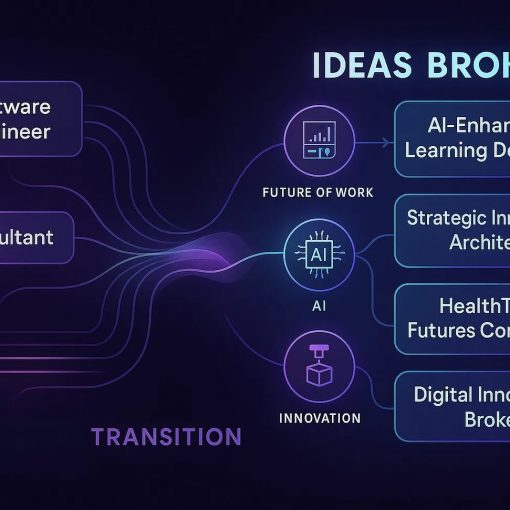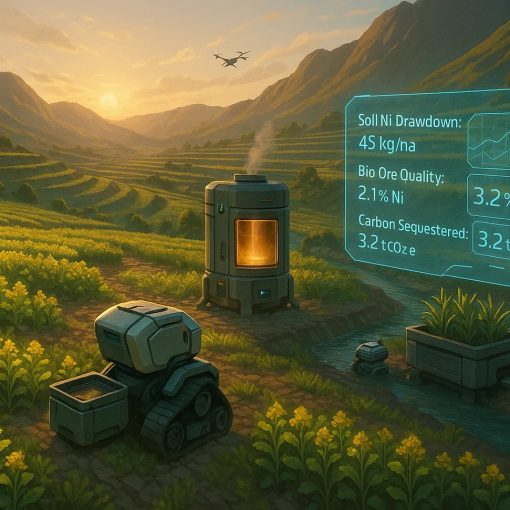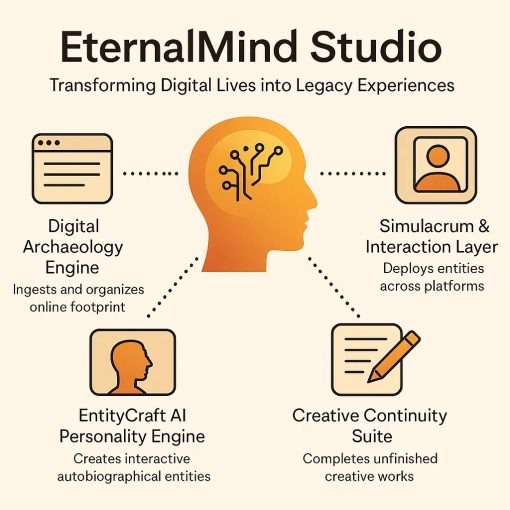Unlocking the Potential of the Metaverse: There are a multitude of articles discussing the challenges hindering the success of the metaverse, and while I won’t delve into those details here, META (formerly known as Facebookhttps://about.meta.com/company-info/) is feeling the pressure. In this blog post, we will focus on the concept of precursors and how they can shape the path towards a thriving metaverse.
11/02/2024 : This update is a response to a contribution from a reader Nicole Frank. She referenced the link vpnmentor.com . It adds more information and context to the section called “A segue to Infrastructure, Creating markets and Education: Key Factors for Metaverse Adoption“. It shows the opportunites, size growth of developing markets, with comparative analysis and can be invaluable input for further analysis if I write a deep dive blog post or if the readers want to perform further analysis .
Introduction: The Promise and Challenges of the Metaverse
Defining the Metaverse: A Vision of a New Digital Frontier
It is a bit difficult to provide a definition of the metaverse which is a collection of concepts and technologies. A possible definition is “ The metaverse is a vision of what many in the computer industry believe is the next iteration of the internet: a single, shared, immersive, persistent, 3D virtual space where humans experience life in ways they could not in the physical world” www.techtarget.com. (More definitions in the reference below)
The main drivers are: Investment, tech opportunities, speed of technological adoption, scale, first user advantage, maturity of social media adoption etc.
The Power of Precursors: Paving the Path to the Metaverse
My thoughts are more rudimentary and play around with the concepts of technological leaps Technological leaps, Biggest tech leaps, and Technological adoption technology-adoption/. The thoughts I have led me to thinking about one concept; Precursors.
Precursor: A precursor is a person or thing that precedes and serves as a harbinger or forerunner, announcing the arrival of someone or something to come. In the context of the metaverse, I am specifically focusing on precursors because there seems to be a prevailing belief among the tech community that we can swiftly transition to the next stage, which is the metaverse. I told ChatGPT to write a short blog post on the internets precursors which can be found here: The Precursors to the Internet: Unveiling the Foundations of the Digital Age this saves me a long explanation.
However, it is essential to take a step back and consider the existing technology development curve and the current state of adoption within the tech industry. Factors such as infrastructure, the lifecycle of people, and geographical location also play significant roles. Within the tech market mix, which encompasses various elements, we find precursors alongside accelerators, Government assisted technological market development, finance/investment, and groundbreaking technologies like AI. Take for example the role of Startup accelerators, which are operating in the metaverse\ fintech sectors provides mentor-based programs that offer guidance, support, and limited funding in exchange for equity for new enterprenuirs. These will spawn \ amplify Accelerator technologies and markets this includes fintech products, virtual meeting tech, 3D games, cryptocurrencies, 3D world-building tech, NFTs, goggles and heads-up displays, holograms, new coding languages, and immersive learning, among others. The acceleraton , existing player and businesses have assumed that we are working from the same base in creating the metaverse but precursor look at that foundation an ask the question what is missing?
This is a shallow drive on Precursors: People, process, technology
It should be noted that there are multiple articles on AI precursors: Ten technologies that are precursors to the AI era and some on metaverse precursors.
My thoughts on some framworks such as TAM,(TAM defined) which is a widely used theoretical framework that explores the factors influencing the acceptance and adoption of technology,leads me to define some of these other percusors which are tech buidling blocks that feed the framework of TAM= Perceived usefulness +Perceived ease of use- prior to Intention to use – Usage behaviour (See references below) .For the Metaverse use case:
-Precursor 1: Full Body Scanners and 3d scanners and Enhanced Virtual Interactions
Full body scanners: Imagine if people in the real world could be scanned and saved as virtual representations. This technology would enable enhanced interaction, presence, and shopping experiences, while also addressing concerns related to the uncanny valley, representation and adoption. Businesses could collaborate to fund this innovation by sponsoring scanning booths, knowing it may only be needed for a limited period (approximately 3-7years depending on country) before the concept becomes obsolete due to tech and once scanning not needed.
3D scanners: Although expensive to personally own due to the cost\ value\flexibility (the prices are falling revopoint) the creation or availability 3d scanner shops\ booths albeit temporarily. It enables users and creators to take objects to these locations and obtain 3d scans. In the context of the metaverse it might play a pivotal role by bridging the physical and digital realms with their remarkable capabilities. Operating by meticulously capturing intricate data from tangible objects, 3D scanners translate these objects into accurate, digital, three-dimensional representations. This would enable creators and users in their world building. The high-quality scan data they produce serves as a dynamic input into the Metaverse, enabling rapid and comprehensive digital analysis (meta descriptions on input) and integration, which can enrich the metaverse by merging physical objects and spaces into the virtual realm, revolutionizing how we interact and engage in the digital universe. see Capture3d.com see: Artec3d , All3dp.com. An alternative is a scanning service that goes to the client
-Precursor 2: Controllable Digital Selves and Personalized AI Assistants
Controllable digital selves: In conjunction with the virtual scan is the ability to create a controllable \ designated digital self (possible with digital clones) this can be controversial. If users have access to the API’s from social media and permitted information of interaction from online businesses (and bookmark). To create a virtual person who uses the profile when you are out of the metaverse to the virtual personality can trawl the metaverses hand hold \ help the user with navigation and suggestion of interactions, option of things to do etc, based on their profile similar to algorithms used by Amazon and Netflix. While there may be ethical considerations, this precursor has the potential to evolve into a virtual assistant.
-Precursor 3: Bridging Real and Virtual Worlds through Immersive Environments
Real world interaction with the virtual worlds if you can remember the Sega World\ gaming indoor theme parks etc these are virtual environments that existed in the real world where people could go to interact explore the tech and enable them to make the mind jump to virtual. we might need to build more environments with a finite life span to act as a precursor. Think of the Startrek Holodeck vs the communicator Communicator_(Star_Trek) , the only thing missing from the communicators implementation today is the non-intrusive size and a real time universal language communicator. Also, there is an unexpected divergence today i.e trying to combine the communicator with a medical tricorder.
The instinct is that most people have is to build for the exiting base i.e.: gaming consoles, computers, mobile phone. According to the latest data, There are approximately 3.09 billion gamers /number-of-gamers, There are 5.18 billion internet users in the world today internet users internet users these number drive the thinking but how do you move them to a new type of interaction. This does not have to be an arcade but real-world space which leads me to the next.
-Precursor 4: Gamification and Transitioning User Engagement
Gamification using glasses, cell phone and augmented reality in the real world. Pokémon Go was not an aberration if you look at it as a precursor. There could be real world overlays, augmented events in spaces such as convention centers. Using monetization, prizes and centers. crypto as rewards, using behavior and social constructs for interaction that reward users with learning, competition and strangely enough collections (of real and virtual (NFT inspired) items. (Why do we collect things? why-do-we-collect-things.html)
-Precursor 5: Mobile Devices for Metaverse Mobility
Creating A new mobile device; the current mobile meta device is centred on goggles and glasses but is there an option for a third mobile device especially if you want to take the experience out of the home in most countries outside the west people have more than one mobile device (lack of infrastructure and cell service by provider being a big driver, separation of work versus personal devices being the other). See one of my old posts and update for the Metaverse: My second mobile device or Phone https://ideaswiz.com/my-second-mobile-device-or-phone
-Precursor 6 : Dubious precursor : Every one who produces “Stuff \ Products” sells: A virtual version or NFT version (NFT explained) or provides a free meta compliant digital version on purchase of a physical version. it ties in with Precursor 1.The challenge is seeing the value, in revenues , branding and cost\ benefit .But once tried and if sucessful (everything relies on succesful implementation) there would be an avalanche. I am considering talking to all my architect friends to move some of their libaries of buildings in autocad to sell as is or modified
A segue to Infrastructure, Creating markets and Education: Key Factors for Metaverse Adoption.
These are just five out of the ten or more precursor ideas I have contemplated. However, one particular idea stands out as a long-term precursor that warrants further discussion in a future blog post. In the Western world, tech companies may begin advocating for a change in their governments’ approach to their relationships with third-world countries that they currently support for raw material extraction. Historically, these governments have turned a blind eye to corruption and the lack of development in these countries on behalf of certain extractive corporations over the past fifty years. With local tech markets reaching saturation, these companies will now seek to influence their governments to push for infrastructure development and education in these countries, realizing the need for expansion. China, in particular, appears to recognize this opportunity. The Western world faces a demographic time bomb demography, and countries like India, South Africa, Nigeria, Ghana, as well as underdeveloped South American nations, must develop in order to become viable markets for virtual technology and services. Meta, or any other platform, will face challenges in migrating social media users into these virtual spaces without the necessary technological infrastructure in these countries. China, with its first-mover advantage, is actively creating a market for their technology by ensuring the lights are switched on and their brands are widely recognized. It is important to note that as of 2023, the top five countries in terms of social media users social-media-users are China (1,021.96 million), India (755.47 million), USA (302.25 million), Indonesia (217.53 million), and Brazil (165.45 million). Nigeria, ranked 18th, currently has 38.47 million users, projected to reach 91.55 million by 2027.
Conclusion: Unlocking the Potential of the Metaverse
To fully unlock the immense potential of the metaverse, it is imperative that we reevaluate and embrace precursors as the building blocks for widespread adoption. Imagine having a time machine and the ability to shape the future of the metaverse. In this thought experiment, we must consider how to encourage the adoption and development of the metaverse across various dimensions: people, processes, and technology. By strategically addressing factors such as infrastructure, adoption lifecycles, and the diverse needs of user segments, we can pave the way for a vibrant metaverse that transcends boundaries and captivates users on a global scale. It is crucial to recognize that accelerating development while working in harmony with precursors is key to realizing the metaverse’s full potential. Let us embark on this journey, driven by innovation and a deep understanding of the foundational elements required to shape a thriving metaverse. Together, we can unlock new realms of possibility and create a future where the metaverse becomes reality
References and Links:
- If you are not satisfied: “Seriously, What Does “Metaverse” Mean? https://www.wired.com/story/what-is-the-metaverse/ .
- What is the metaverse? https://www.mckinsey.com/featured-insights/mckinsey-explainers/what-is-the-metaverse.
- Wikipedia https://en.wikipedia.org/wiki/Metaverse
- The people, process, technology (PPT) framework: https://www.plutora.com/blog/people-process-technology-ppt-framework-explained
- The technology adoption lifecycle https://en.wikipedia.org/wiki/Technology_adoption_life_cycle
- “Accelerator,” TechCrunch. [Link: https://techcrunch.com/tag/accelerator/]
- “Virtual Meetings: 10 of the Best Platforms,” CIO. [Link: https://www.cio.com/article/3543897/virtual-meetings-10-of-the-best-platforms.html]
- “The Uncanny Valley: Why People Respond Negatively to Creepy Robots,” Robotics Business Review. [Link: https://www.roboticsbusinessreview.com/health-medical/uncanny-valley-people-respond-negatively-creepy-robots/]
- “The Evolution of Augmented Reality: Past, Present, and Future,” SpringerLink. [Link: https://link.springer.com/article/10.1007/s00779-019-01261-0]
- “Number of Gamers Worldwide from 2015 to 2023,” Statista. [Link: https://www.statista.com/statistics/748044/number-video-gamers-world/]
- “The Importance of Infrastructure Development in Emerging Economies,” World Bank Blogs. [Link: https://blogs.worldbank.org/sustainablecities/importance-infrastructure-development-emerging-economies]
- “Digital Transformation: The Role of Education and Skilling,” Forbes. [Link: https://www.forbes.com/sites/tomvanderark/2021/07/15/digital-transformation-the-role-of-education-and-skilling/]
- “Diffusion of Innovations” by Everett Rogers: This classic work in the field of technology adoption examines the process by which new ideas, technologies, and innovations spread through society. Rogers identifies various stages of adoption, including the role of early adopters as precursors to wider adoption.
- “Technology Acceptance Model” (TAM): The TAM is a widely used theoretical framework that explores the factors influencing the acceptance and adoption of technology. It investigates precursor variables such as perceived usefulness and perceived ease of use in determining an individual’s intention to adopt technology.https://open.ncl.ac.uk/theories/1/technology-acceptance-model/
- Digital Marketing Models: The Technology Acceptance Model
- smartinsights Digital Marketing Models: The Technology Acceptance Model the original Technology Acceptance Model Adaptations of the model have also been made to address ‘variance in individuals’ intention use the new technology system’, such as the Venkatesh and Bala, 2008 model: “Venkatesh and Davis (2000) extended the original TAM model to explain Perceived Usefulness and usage intentions in terms of Social Influence and cognitive instrumental processes (Subjective Norm, Image, Job Relevance, Output Quality and Result Demonstrability), but they omitted ATU.”
- “Early Adopters of Technological Innovations: A Systematic Review” by Eunil Park et al. (2012): This study provides a systematic review of literature on early adopters. It explores the characteristics of early adopters and their role in the adoption of technological innovations across various domains.
- “Antecedents and Outcomes of Early Adopters in Smart Mobile Services” by Xi Zhang et al. (2018): This research examines the role of early adopters in the context of smart mobile services. It investigates the factors that influence individuals to become early adopters and the subsequent impact on the success of these services.
- “The Role of Early Adopters in the Diffusion of E-commerce Innovations” by Joni Salminen et al. (2017): This study focuses on the role of early adopters in the diffusion of e-commerce innovations. It investigates the characteristics of early adopters and their influence on the adoption behavior of later adopters.




One thought on “Unlocking the Potential of the Metaverse, Precursors and the Path Forward”